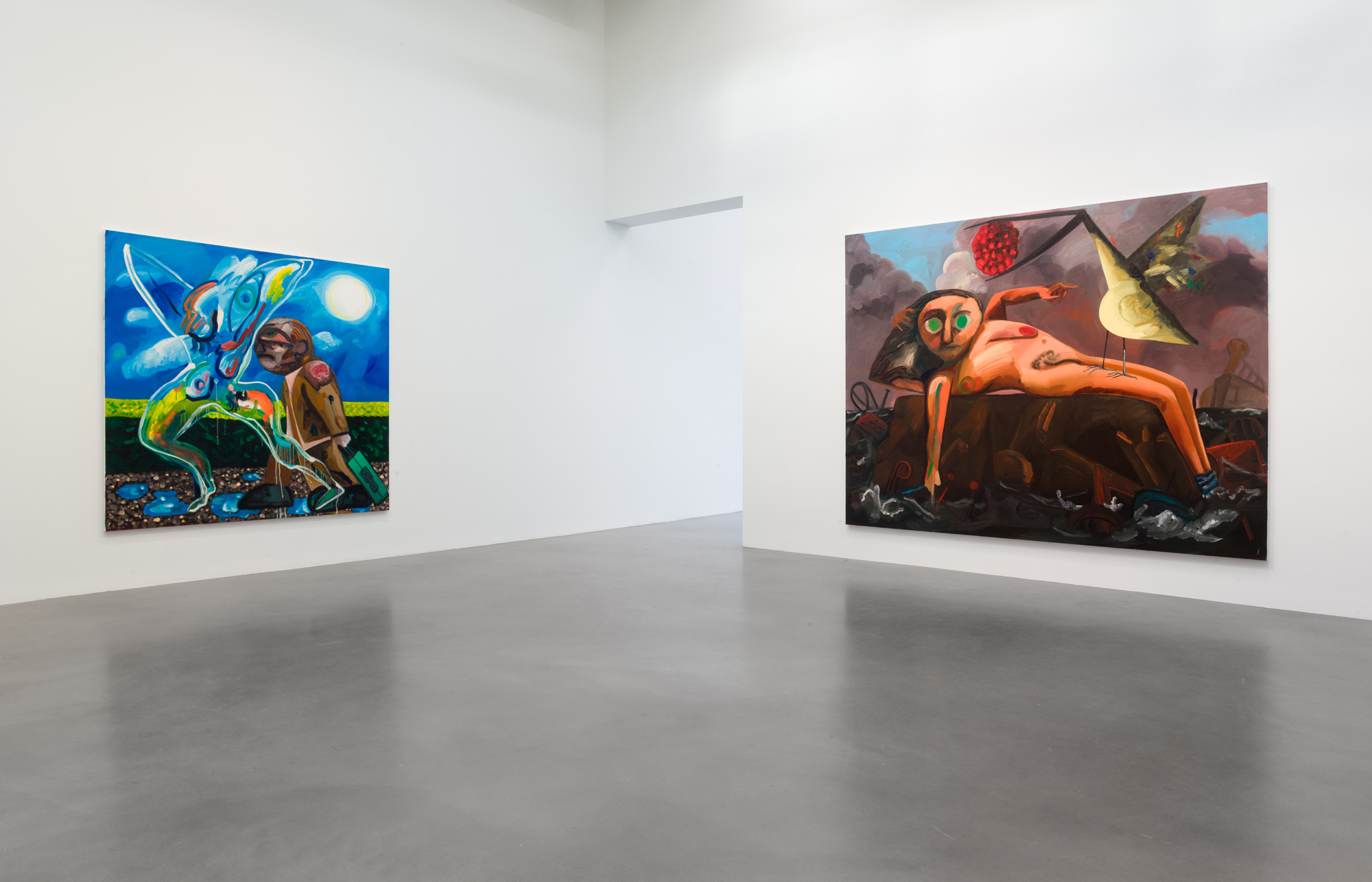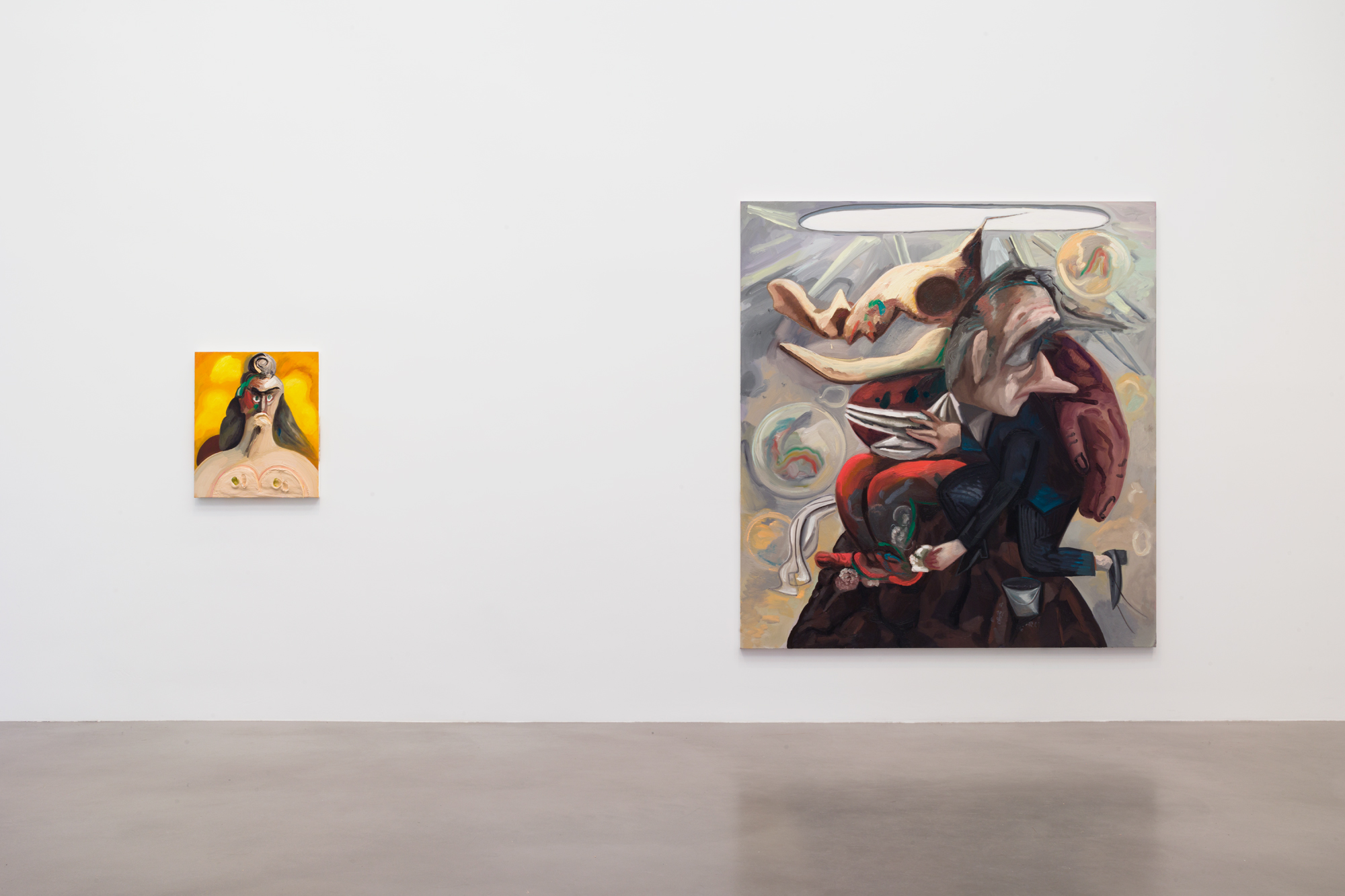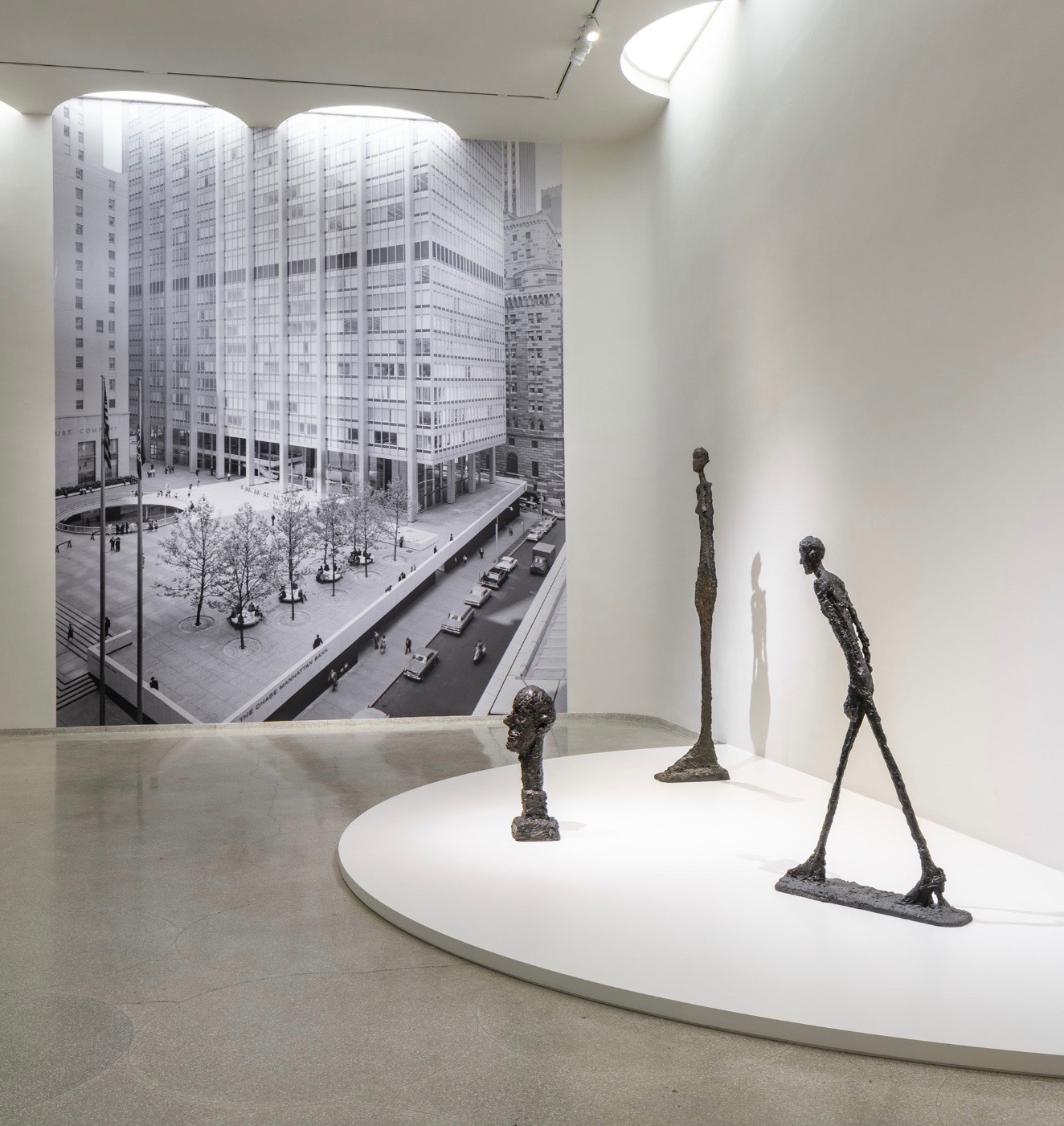Dandy in the Underworld Dana Schutz: Imagine Me and You Petzel Gallery Through February 23, 2019

By Bradley Rubenstein
The Surrealists waged the most extreme warfare on the containers of an autonomously developed cultural sphere. The contents got dispersed.
—Jurgen Habermas, Modernity: An Incomplete Project
For Freud our sexual desires as male or female, our confidence in language as true or false, and our security in the image we judge as perfect or flawed, are fantasies.
—Jacqueline Rose, Sexuality in the Field of Vision
Dana Schutz might once have seemed an unlikely candidate to fill the role of Baudelaire’s “painter of one’s time”; her early work, knowingly funny, played within a framework of contemporary tropes, sitcom storylines, and post-modernist strategies. While often lampooning High Art, her greatest strength was an uncanny knack for finding the deep psychological impulse hiding in plain sight, in quotidian scenes of everyday life. Baudelaire wrote, “Nearly all our originality comes from the stamp that time imprints upon our sensibility.” When he wrote this, mid-nineteenth-century Parisian artists were experiencing the apocalypse of the Franco-Prussian War, the rise and fall of the Commune, unstable economies, class systems undermined by industry, and industry driven by rapidly developing sciences. Poincaré’s theories, Flammarion’s celestial maps, Pasteur’s discoveries, Thénard’s paint. Replace “Trump Era” with “Third Republic” and one might see Schutz as the Painter of Modern Life for the Instagram Age.
Schutz infuses the personal onto popular images, using a variety of styles. Her early work felt like an artist at play, in a serious way, rummaging through art history for the parts to create a new kind of painting, one where simple subjects, like nudes and portraits, resulted in highly charged, psychological studies. Like Manet, Schutz’s strategy ran aground, with Open Casket (2016), when the contract between the artist and the public shifted during a time of media saturation.
In her recent work at Petzel, Imagine Me and You, Schutz incorporates many of the tropes of her early work—the Chaplinesque Treadmill (2018), the sitcom Surrealist setup of Washing Machine (2018)—but she seems to suddenly break through these narratives to create works that feel more intense, more personal, a little haunted. André Breton wrote, “It is incumbent on us to try to see more and more clearly what is transpiring unbeknownst, in the depth of the mind.” Schutz lays bare, in a few works, that sense of searching, of plumbing the depths of weirdness and emotion. The Visible World (2018), like Treadmill, the most literal works here, both show figures “on the wheel” of Modernity, always wanting, never getting.
Trouble and Appearance (2018) and The Wanderer (2018) are the kind of paintings one sometimes encounters where the wealth of visual reference is woven into a simple, iconic image. In both works the protagonist is a roundheaded, vaguely Charley Brown-ish, avatar of a Wall Street businessman. In Trouble and Appearance he has a suit and tie and a briefcase. In The Wanderer he has lost the suit, and probably his license, as he now sports a tracking device on his ankle. He inexplicably carries an umbrella and slogs through a sea of tiny crabs. Here Schutz’s paint goes off to wander on its own, daubing, dragging, swirling, wet-on-wet; monumental little constructions of pigment are woven together, physically weighty. The figure in Trouble is menaced by a spectral figure of a woman, a surreal apparition, like something out of a Picabia or Jorn. Schutz plays the paint light and insubstantial, in contrast to the earthbound handling of the businessman.
In Touched (2018), the strangest painting in the exhibition, a bust-length portrait, part Dokoupil, part Cake Wars, grimaces, as if in response to the gouging of her breasts. The painting is so tactile, so disquieting, it mesmerizes, not the least for its incongruity. To quote one other nineteenth-century writer, Vincent van Gogh, “My brush stroke has no system at all. I hit the canvas with irregular touches of the brush, which I leave as they are. Patches of thickly laid-on color, spots of canvas left untouched, here or there portions that are left absolutely unfinished. In short I am inclined to think that the result is so disquieting and irritating as to be a godsend to those people who have preconceived ideas.” In Schutz’s recent work we see the labyrinth of her psyche, and Schutz is an intrepid guide, a post-modern flaneuse; we get to stroll with her through the labyrinth of her psyche, and possibly our own collective cultural unconscious.







